One of the most frequent questions we get at the nursery is about borer holes in tree trunks. Unfortunately, almost everyone wants to know how to “treat” for the borers, not realizing that the presence of borers is just an indication of a larger problem.
Wood boring insects include the larvae of various beetles, moths and even a wood boring wasp. Most of these insects lay their eggs on the bark and the hatching larva chew their way into the plant to feed. Most wood boring insects cannot successfully attack healthy trees. They will be found in parts of the trees that have already been damaged by wounds, and in trees severely stressed by recent transplanting, by drought, infection by disease organisms, severe winter conditions or severe drought.
The severe stress put on many trees in our area by the historic freeze in 2021 and severe drought conditions of 2022 and 2023 has resulted in borer infestations in many weakened trees.
If history is any kind of indication, I expect there to be many more trees affected by borers in the years following this freeze event of 2021 and drought of 2022 and 2023.
I cannot forget that following the severe drought in 2011 in the state of Texas, a flurry of borer sightings was reported. In fact, we are still seeing ramifications of that drought today. It is thought that some of the freeze-damaged trees were possibly ones that were weakened ten years ago by the drought.
The lesson to be learned is that if your trees are weakened for any reason, they become more susceptible to borer infestation. Unfortunately, the pre-existing condition that weakened the tree in the first place is more likely to be the ultimate cause of death of the tree than the borers. If you have a tree that has been adversely affected by freeze or drought, you may want to look at any pre- existing conditions that might have weakened the tree prior to the freeze and try to correct these conditions. Doing this will ensure the longest possible life for your tree.
Of course, the best way to avoid all this is to practice good cultural methods when planting, establishing, and continuing to care for our trees. Healthy trees have the ability to produce defensive chemicals that can kill young borers. Trees that are well hydrated are less suitable for attack. Healthy callus tissue may be stimulated by the borer and it will encapsulate the young larva and kill it.
Any means that will minimize stress will go a long way towards preventing borers from affecting your trees:
*Choose the right tree for the soil in your location. Not all trees tolerate the poor drainage in clay soil or the shallow, rocky soils in some of our area.
*Plant the tree correctly. Never plant it any deeper than the original soil line. If anything, plant a little high. Do not dig the hole deeper than the original root ball to avoid settling.
*Do not fill around the trunk of a tree, or change the original soil line in any way.
*Apply 2”-3” of mulch around a tree but be sure to pull the mulch back from the trunk of the tree a few inches. Mulch should never touch the trunk of a tree.
*Do not leave staking material on for more than one year. The tree will not gain caliper nor grow support roots if staked too long and the bark may be damaged by the staking material.
*Do not allow grass to grow up to the trunk of the tree. This will prevent string trimmer damage to the trunk.
*String trimmer damage is NOT REVERSIBLE!
*Protect tree trunks from deer damage. The “rut” starts in September and runs through February. Make sure the protection can allow the trunk to “breathe”. Fencing, not corrugated sewer pipe.
*Deer damage to the trunk is NOT REVERSIBLE!
*Water deeply when establishing the tree. Water the original root ball and one foot beyond. After the first year, expand the watering distance out a couple of feet each year.
*Once established, water deeply by applying 2” of water out to the dripline of the tree every week to two weeks in the summer, depending on variety and soil type, and every two to three weeks in the winter.
*Remove broken branches promptly, making the pruning cut into the branch collar.
*Prune during the winter months, and do not over prune. Make pruning cuts at the branch collar. Do not make flush cuts or leave stubs for insects and disease to enter.
*NEVER USE A WEED AND FEED PRODUCT. EVER. NOT IN YOUR LAWN AND NOT UNDER THE CANOPY OF TREES. EVER.
If you have read the above precautions and recognize any that you may have allowed to happen, it is never too late to make adjustments to your cultural methods.
If you have been watering at the base of the trunk for years and years, even though your tree is established, you can begin to water out to the dripline NOW.
If you have allowed grass to grow up to your tree, you can correct that NOW. Do not use herbicide to kill the grass. You will have to pull/dig it out. Then apply mulch to keep the grass out.
If you have piled mulch up on the trunk of your tree trunk, pull it back NOW. Dig down until you see where the roots are growing out from the trunk and pull mulch/soil back three to six inches.
Learn how to make pruning cuts correctly. Anyone who prunes a tree should know where to cut. Period. Visit this website to learn more:
https://aggie-horticulture.tamu.edu/earthkind/landscape/proper-pruning-techniques/
Now, about the borers. What CAN you do once you see holes? What if you see the adult borer beetles on the tree? Here are some suggestions:
*Know the difference between borer holes and sapsucker woodpecker holes. These holes that encircle the trunk are caused by the feeding of a woodpecker.
*Borer holes will have sawdust and “frass” (excrement) coming out of them.
*Use a stiff wire to push in the borer hole and kill the larva.
*Spray the trunk during adult borer activity with Bifenthrin, Permethrin or Spinosad.
*Soil applied systemic insecticides are only effective on flat headed borers, as they feed in the vascular system just under the bark where the insecticide will move in sufficient concentration to kill the larva. Imidacloprid should be applied at the time the insects lay their eggs, as it can take 2-3 week for it to be taken up by the tree. Keep the soil moist for the systemic to be able to move to the roots. Do not use on flowering trees that attract pollinators as it will be toxic to the pollinator insects.
Click HERE to read more on flat headed borers.
Borers that feed and spend more time in the interior of the trunk, such as roundheaded borers and clearwing moth borers, will not be affected by a soil applied systemic.
Click HERE to read more on round headed borers.
Remember, controlling the borer is only PART of the problem. Maintaining a healthy tree is the solution.

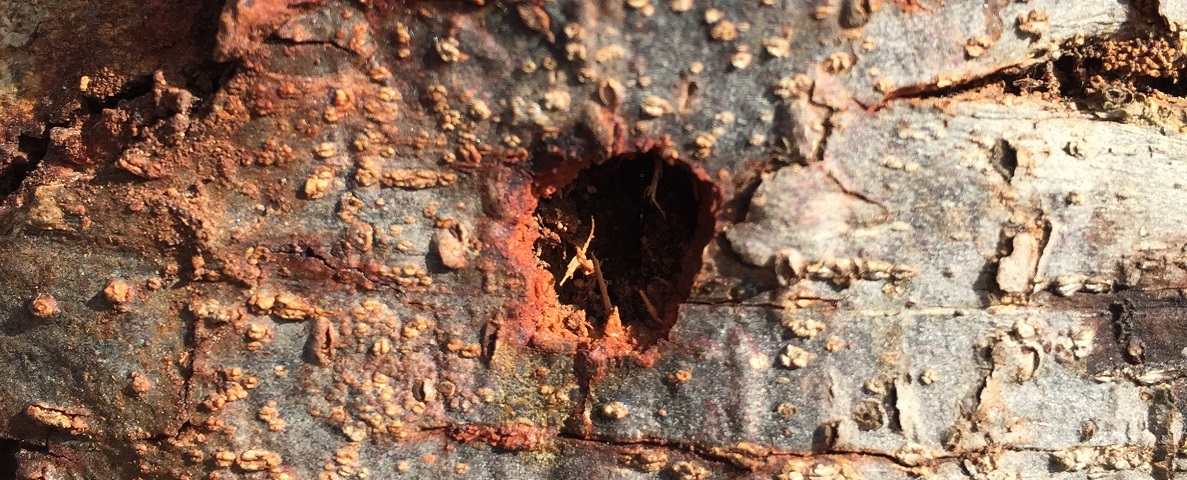
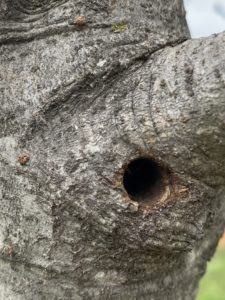
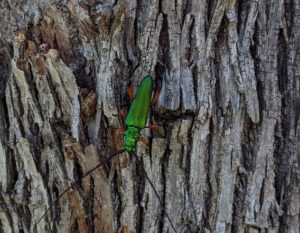
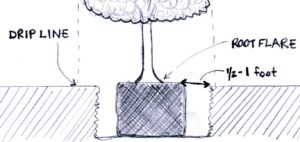

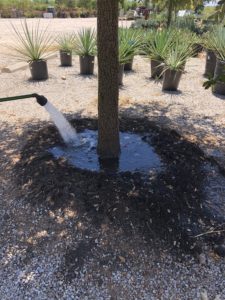
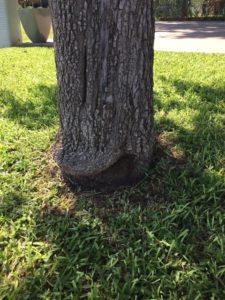
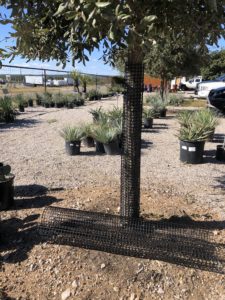
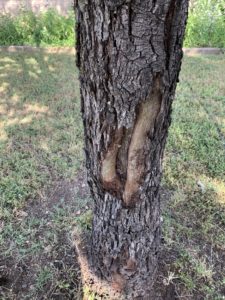
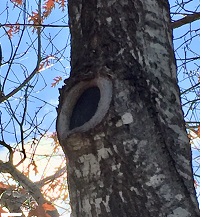
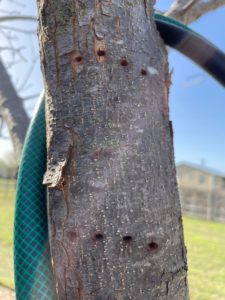
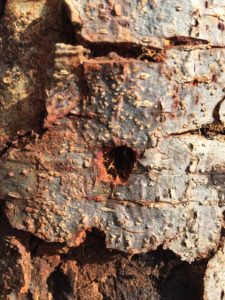
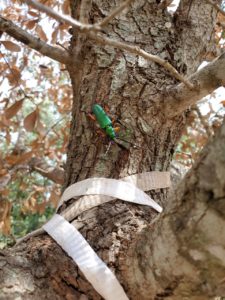
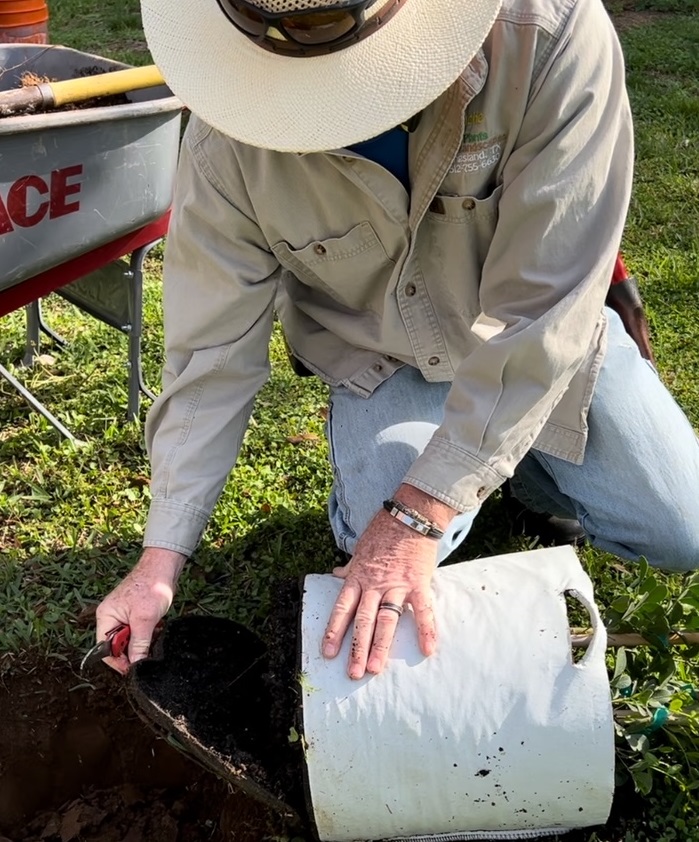
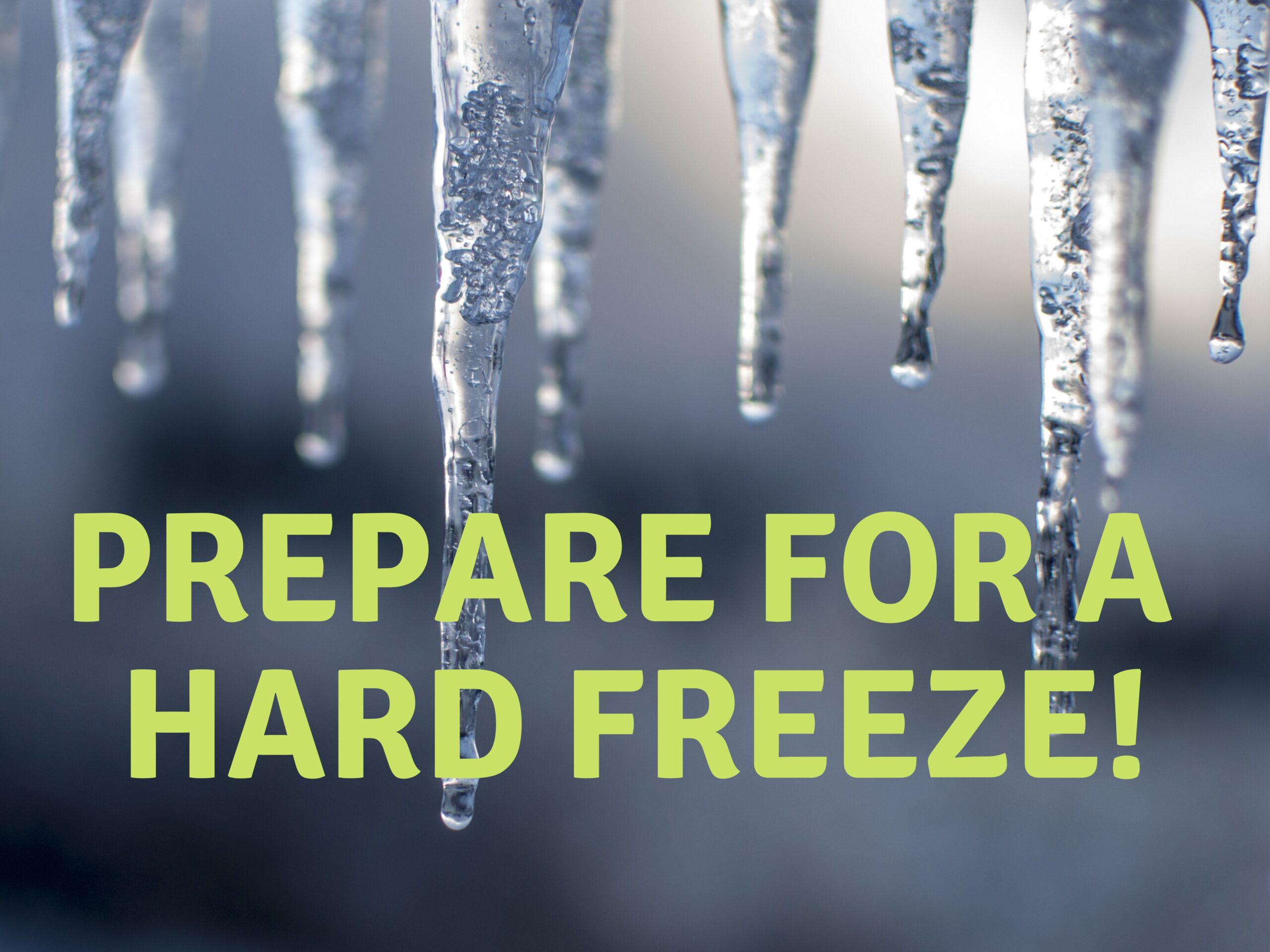
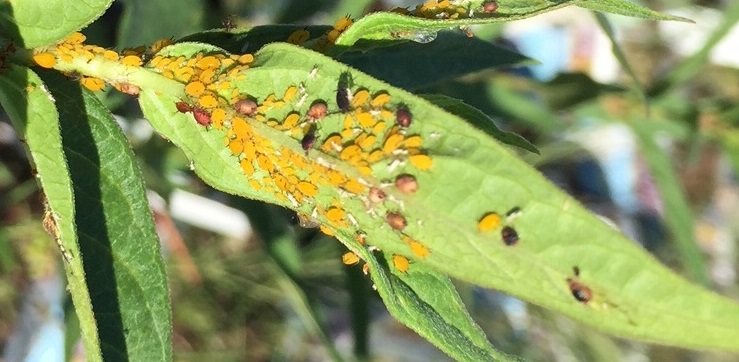
Leave A Comment